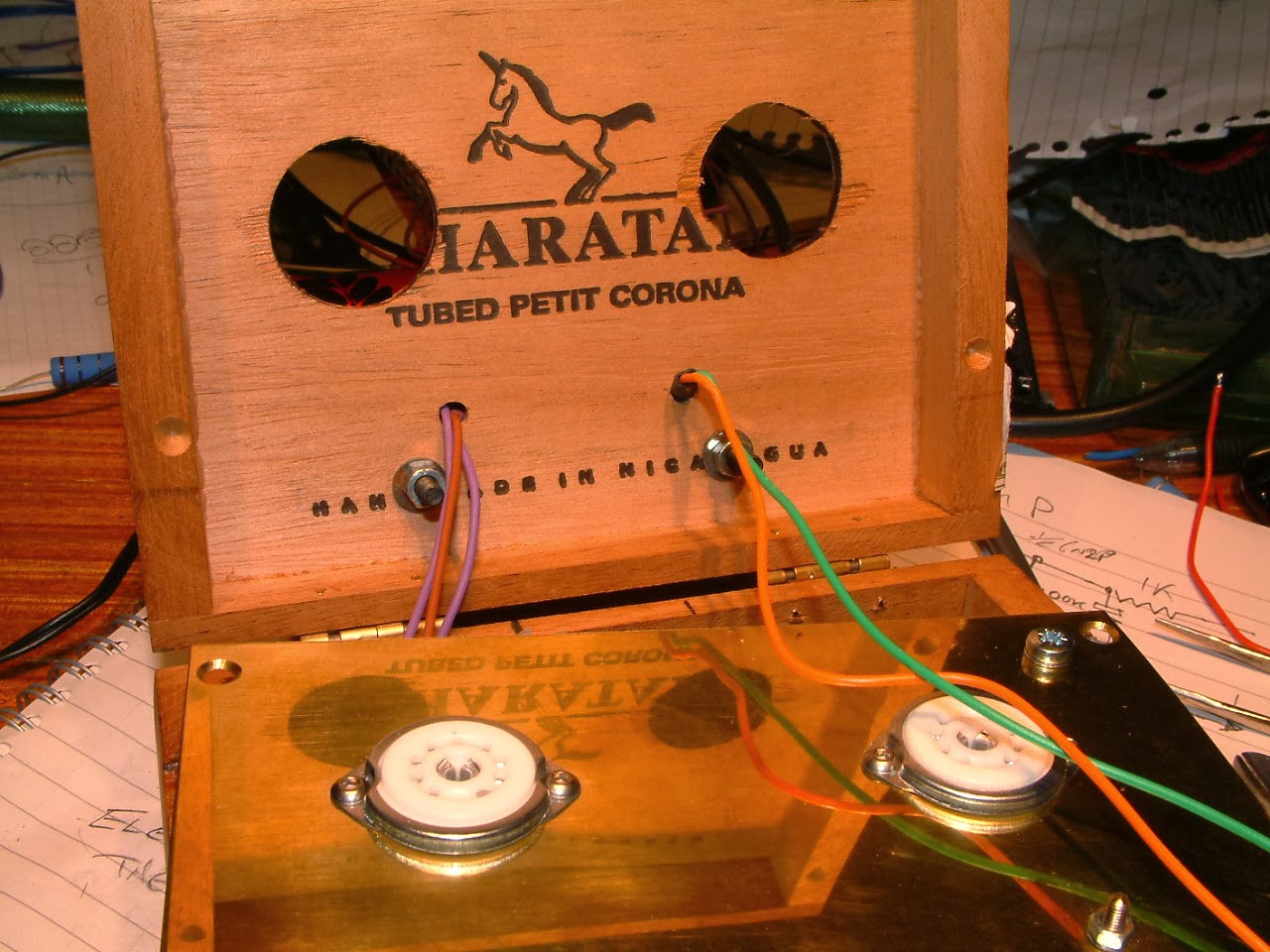Okay. Taking another break, this time for some lunch. I haven't got quite as far as I wanted, but I'm happy with progress so far. Some of the slow-down was due to redesigning the layout on the fly. I'll explain why with the pictures.
First component of the pre-amp goes in place. It's the 68k resistor soldered to pin 2. This is what we call the grid stopper. Its main function is to act as a filter to prevent radio interference and we try to solder it as close as humanly possible to the valve base.
You'll also notice in the picture that the solder tag on the top left of the tag board has been squashed down. And that's to allow the rather large decoupling capacitor some room to sit close to the board.
The decoupling capacitors form part of the power supply. Their job is to work in conjunction with the power supply dropper resistors to form a high-pass filter, helping to stop hum in the amplifier. In my early amps I used to build a separate power board with a series of "nodes" - a resistor and capacitor filter - then run flying leads to each part of the circuit that needed power. Through trial and error, I discovered that this wasn't always the most stable way of doing things. Far better from a stability point of view to have the capacitors as close to the part of the circuit they're feeding as possible.
By "unstable" I mean problems with unwanted oscillation and that low frequency thumping sound called "motorboating".
So now we get to the red LED connected to the first cathode on pin 3. This is to provide the bias voltage for the stage.
In order for a valve amp to work correctly it needs the grid to be sat at a more negative voltage potential than the cathode. I'm oversimplifying massively here for the sake of a quick and dirty explanation by the way. One way of setting the grid more negative than the cathode is by sticking an LED between the cathode and ground, effectively making the cathode more positive. We can achieve the same effect with a diode or a resistor or a resistor in parallel with a capacitor (which has an effect on gain at different frequencies).
As I said, that's a quick and dirty explanation. I chose LED biasing because I've used it in most of my amps and I've found I like the sound and the reliability. Plus it reduces the component count in this amp by two!
You might also have noticed in the pic above that I haven't soldered the LED or capacitor into the circuit. And that's because I had a feeling I was going to have to do some juggling of the layout.
I needed to use the capacitor ground connection to run the shield for the input lead...
I also added the ground cable for the capacitor at that point. This will loop back to the ground point of the first smoothing capacitor in the power supply. And again this is done to keep hum to a minimum by adopting what's known as a "star ground scheme" for the amp. All the signal and power grounds are taken back to a single point in the amp to avoid ground loops.
So now it can all be soldered down to the board and the excess leads trimmed.
Next up we have another minor layout problem. The anode resistor for the first stage of the pre-amp will be sat at around 250 volts. And it's also sat very close to the head of the mounting bolt that is a direct connection to the chassis.
Which is why the resistor has been given some insulating sleeves and is standing quite high from the board. The grey cable you see running under the board is the feed to the power amp stage that will be taken from the centre pin of the master volume pot.
Okay. More parts going into place. The black cable is the feed and return along with the grounded screen for the gain control. This sits between the first and second stages of the pre-amp.
Decoupling capacitor for the second pre-amp stage and the 100k anode resistor in place. Also in this pic you can make out the two interstage coupling capacitors (the little orange discs). Their job is to block the high DC voltages from the anodes while allowing the AC signal voltages to pass. However, they also have a filtering effect. By adjusting the values of these capacitors we can shape the voice of the amplifier. When the tweaking starts, it's these capacitors that will get looked at first.

And there it is, almost complete and ready to test. I still have to wire in the control pots and output transformer then connect up the power to the board. Then testing can start. If you look, there are two large blue resistors on the right of the tag board. These are the dropper resistors in the power supply that I was talking about earlier, the ones that form part of the supply filtering. In my original layout, these were supposed to be sat alongside the decoupling capacitors. When it came to putting the parts together, I realised they were just too big! So that's why the resistors are sat way over to the right, feeding their respective decoupling capacitors through the red flying leads. Stability shouldn't be an issue though. The important factor is where the capacitors sit rather than the resistors.

















1.jpg)
2.jpg)
3.jpg)
4.jpg)
































